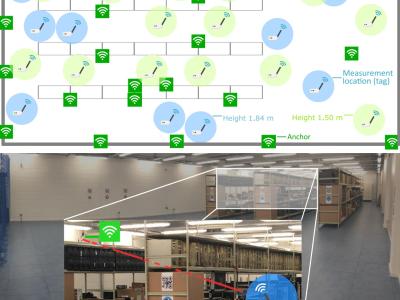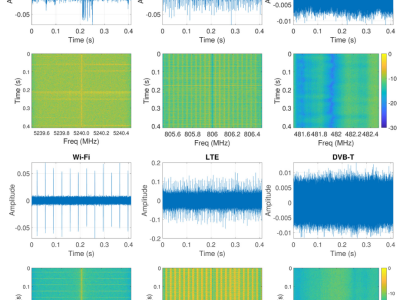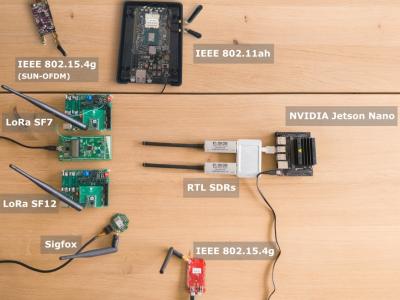Dataset Entries from this Author

This dataset contains CIRs from 23 different positions in an industrial environment, as illustrated in the picture.
These originate from a tag-anchor pair configured with two-way-ranging for distance estimations. In total, 21 anchors are placed in the area, allowing both Line-of-Sight (LOS) and Non-LOS (NLOS) signal propagation, as illustrated in the picture.
The aim during the data collection proces was to measure UWB ranging errors in (N)LOS environments. As such, the ground truth of each position was measured using a laser.
- Categories:

This dataset contains IQ samples captured over-the-air in six different locations in Gent, Belgium (UZ, Reep, Rabot, Merelbeke, iGent and Gentbrugge). Each location has unique data characteristics (e.g. different signal strength and noise levels) due to different physical signal propagations. As an example, these differences in two locations (top two and bottom two rows) are displayed on the spectrograms.
- Categories:

We provide a dataset with IQ signals captured from multiple Sub-GHz technologies. Specifically, the dataset targets wireless technology recognition (machine learning) algorithms for enabling cognitive wireless networks. The Sub-GHz technologies include Sigfox, LoRA, IEEE 802.15.4g, IEEE 802.15.4 SUN-OFDM and IEEE 802.11ah. Additionally, we added a noise signal class for allowing detection of signal absence.
- Categories:
